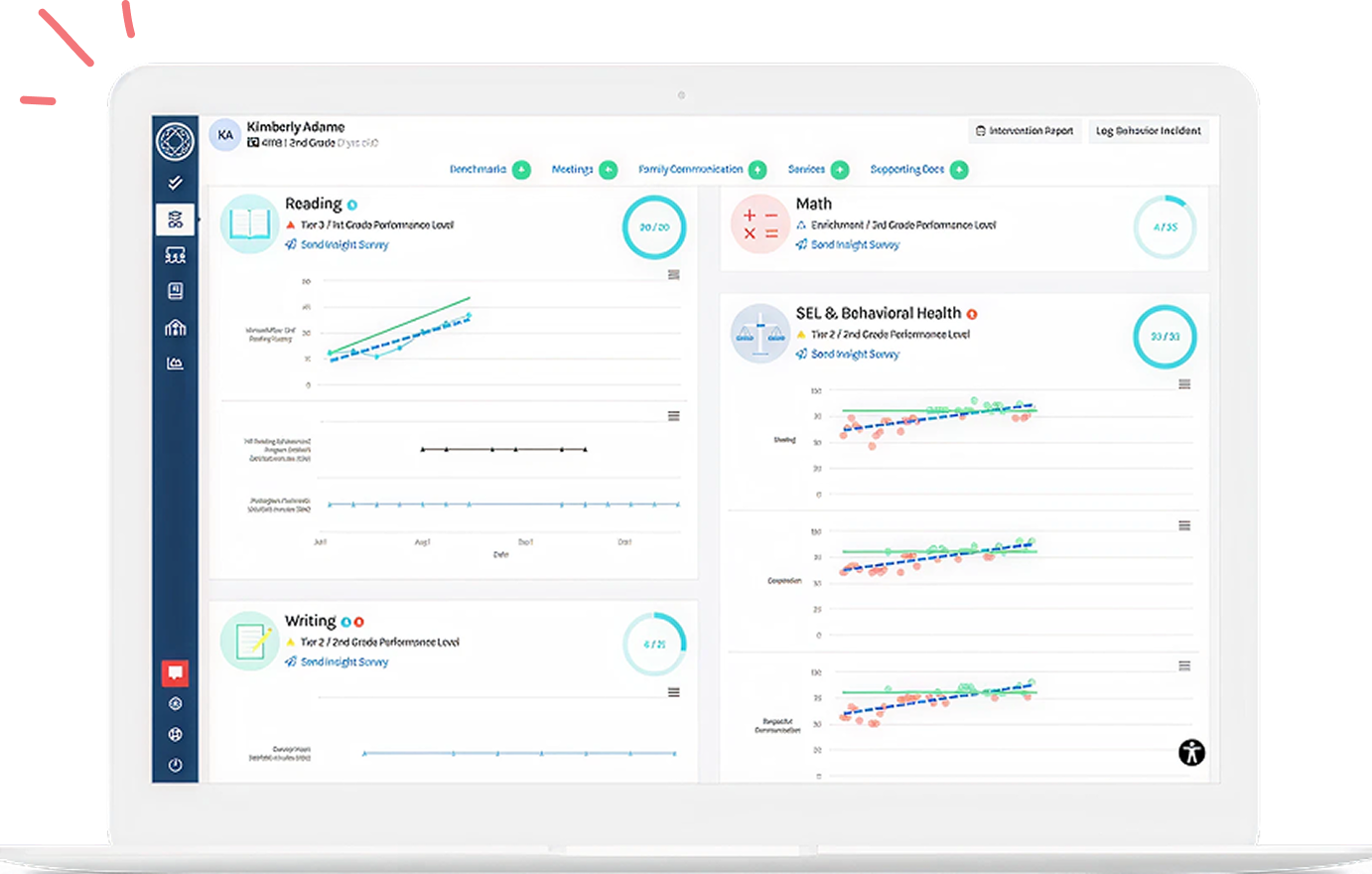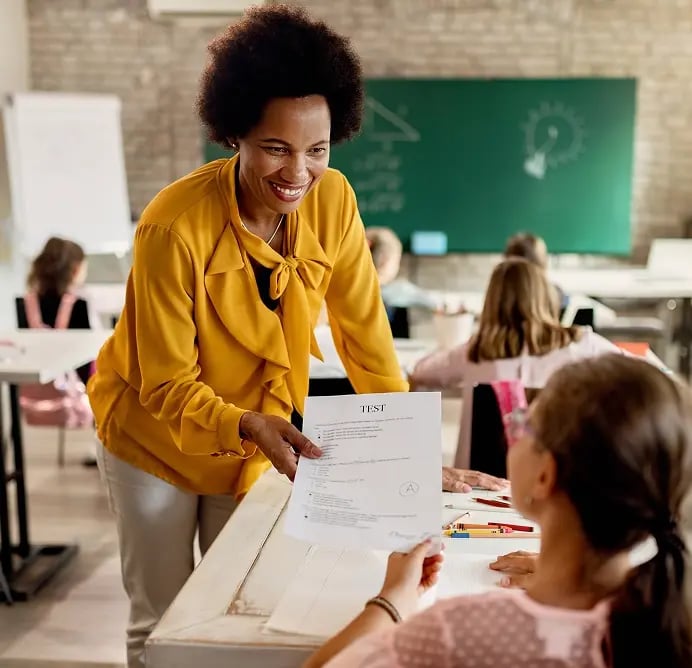In my middle school classroom, the introduction of a group project brought out mixed feelings from students. Many students loved being able to pick their groups and hated it when I assigned groups, while other students wanted to bypass the teamwork altogether.
“Ugh, do I have to?”
“Why can’t I just work alone?”
So, before the first big group project, we discussed what it takes to be a good team member and why this is important. Working together in groups is a life skill that must be learned, modeled, and practiced.
No matter how many group projects we did, there was always room for my students to grow in their ability to collaborate, take ownership, and support their peers. The same can be said about educators. Education is a collaborative practice, and there is always room to grow as a great team member. This means working collaboratively to get the most from our colleagues' rich and diverse perspectives, knowledge, and experiences. In the important work of supporting students, each person needs to bring their best to the table.
Research shows that having a strong collaborative team influences student outcomes. Implementing a Multi-Tiered System of Supports requires a strong team culture. MTSS is a framework built on collaboration and team problem-solving, designed to support students and their needs.
The National Center for Learning Disabilities says, “The primary purposes of collaboration include: identifying and sharing effective academic, behavior, and social-emotional instructional practices, ensuring that practices are consistent across all providers, and ensuring that the students benefit from those practices.” This type of collaboration aligns with the design and purpose of a strong MTSS practice.
Educational leaders establish a collaboration process by selecting and establishing an MTSS team for the building, but in order to have a strong team, there are qualities and attitudes required of those who participate within the MTSS and other teams a part of the process.
Teamwork Is Essential to a Strong MTSS Practice
Within the MTSS framework; a strong team culture is created when individual members do their part to help reach the team's goals.
There are a few types of teams that you might serve on within MTSS, such as a school-level leadership MTSS team, your grade level or departmental team, and student problem-solving teams. Each type of team works to support students at different levels, all essential to the MTSS process within a school.
With each type of MTSS meeting, each person contributes to the success of the meeting, whether a building leader, social worker, interventionist, or teacher. Each perspective is required for the best outcome and solutions. Let’s outline what characteristics make for a great team member, no matter the role in the MTSS process.
How To Become a Great Team Member
Being a great team member requires self-awareness, practice, and honest reflection. Like most things in life, there is no point of arrival as a perfect team member, but we can continually evaluate and grow toward that goal. Here are four important qualities of a great team member:
A Great Team Member...Strives To Stay on Task |
With so many things happening daily, staying focused in a team meeting can be difficult. Regardless of the team you serve, keeping to the agenda and the norms are essential. Your time and your fellow educators’ time are valuable, and using every bit efficiently is key. Doing your best to remain on topic and an active participant will keep the value of the meeting high.
A great team member can help the team stay on track by doing the little things that help the efficiency of a meeting, such as
- Add relevant items and details to the agenda before the meeting
- Keep the collective mission and vision for the team at the forefront
- Stick to the meeting norms such as respectfulness and time limits.
- When possible, steer the group back to the task at hand.
- Avoid multitasking. A focused meeting is a shorter meeting, so stay in the moment.
A Great Team Member...Cultivates Curiosity |
Promoting an atmosphere of curiosity by asking questions before making statements or stating opinions. This can be disarming in tense moments. Being curious about what people share in meetings also allows people to feel heard, meaning that someone who might have feared getting their ideas shot down will feel free to speak up. Curiosity, by asking “what if,” can also point the group toward the best solution, not just the first idea. A curiosity mindset is essential for collaboration and compromise.
Here are a few other specific ways a great team member can stay curious:
- Allow others to be the expert
- Assume positive intent about the other team members
- Use data to back up your insights about students
- Ask follow-up “why” questions and hear them out.
A Great Team Member...Is Trustworthy |
Building trust as a team takes time; mutual respect between team members and co-workers, displayed respect, and positive interactions. It does not happen overnight. It takes time and sometimes years to build efficient and functional teams.
Some ways to help build trust with the team:
- Avoid talking about other people when they aren’t present.
- Be on time for meetings
- Be consistent in how you interact and communicate with people
- Build positive relationships with others outside of the meetings.
- Complete your tasks in a timely manner.
- Check out BRM’s Platform “To do” list for teachers!
A Great Team Member...Is Solution-Oriented |
Being solutions-oriented means that each team member is tenacious about trying and trying again, using a different lens, building on student strengths, and remaining open and positive. Great team members bring their expertise to the group, whether content or student knowledge, so collectively, finding solutions is much easier than solving a problem alone.
Ways to encourage solutions:
- Be tenacious about helping students—this is why we become educators!
- Speak up about the students' strengths whenever possible.
- Look to the data, especially small wins along the way that can highlight which interventions have potential.
- Look to the fidelity of intervention implementation—sometimes, an intervention isn’t working because it hasn’t actually been tried. An MTSS platform like Branching Minds can help track whether an intervention is taking place with fidelity.
Making a Great Team Together To Meet MTSS Goals
![]() No matter what your reaction was to a group project in middle school, as an educator, I know that being a part of a successful team is a great feeling. Meetings can become a highlight in your day as you collaborate and feel supported in your work as an educator.
No matter what your reaction was to a group project in middle school, as an educator, I know that being a part of a successful team is a great feeling. Meetings can become a highlight in your day as you collaborate and feel supported in your work as an educator.
Just as it takes strong leadership, a great MTSS team is also built upon those members collectively being great teammates. This happens when each person makes a personal commitment to keep things on track, to be curious rather than judgemental, to be worthy of the trust and respect of their colleagues, and to focus on solutions.
A solid and committed MTSS team helps create a strong culture of collaboration and positive relationships between the adults in a school, which in turn provides a model for students to emulate. This kind of culture can transform a school and lead to positive student outcomes, which is every educator's hope.
Want to learn more about MTSS teams and meetings? Check out these resources and more at Branchingminds.com.
- Watch this webinar: Effective MTSS Meeting Structure
- Check out & download our MTSS Meetings Guide & Toolkit
- Read these blogs:
|
Key takeaways from this article:
|
Citations/Resources:
DeHartchuck, L. (2021, August 3). Collaboration: Partnering With Colleagues, Families, and Caregivers to Promote Student Success - NCLD. National Center for Learning Disabilities. Retrieved October 7, 2022,
Sparks, D. (2013, April). Strong Teams, Strong Schools: Teacher-to-Teacher Collaboration Creates Synergy that Benefits Students. Journal of Staff Development, 34(2), 28-30.
Suttie, J., & Breines, J. (2017, May 31). Why Curious People Have Better Relationships. Greater Good Science Center. Retrieved October 12, 2022, from https://greatergood.berkeley.edu/article/item/why_curious_people_have_better_relationships

About the author
Larissa Napolitan
Larissa Napolitan is the Content Marketing Manager at Branching Minds and host of the Schoolin’ Around podcast, where she spotlights innovative voices and practices shaping education today. A former middle school teacher and instructional coach, Larissa draws on her classroom experience to create meaningful content that connects research, storytelling, and practical insights for school and district leaders. She is passionate about amplifying educator voices and supporting the growth of all students.

Your MTSS Transformation Starts Here
Enhance your MTSS process. Book a Branching Minds demo today.

















.jpg?width=716&height=522&name=Better%20MTSS%20Meetings%20Blog%20(preview).jpg)

